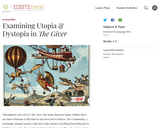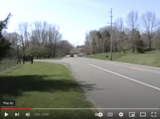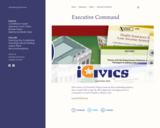
Learn about the features unique to Derivita exams and what it's like to complete an exam in Derivita.
- Subject:
- Mathematics
- Material Type:
- Teaching/Learning Strategy
- Provider:
- Derivita
- Date Added:
- 06/08/2023

Learn about the features unique to Derivita exams and what it's like to complete an exam in Derivita.

What can the statistics tell us about the rise and fall of the second two-party system? How did the breakdown of this system contribute to the onset of the Civil War?

Students will examine how human actions and population changes can affect the environment. Students will examine a series of photographs that compare famous landmarks (Times Square, the Saltair Pavilion in Utah, Laguna Beach, and Niagara Falls) across time, and then they will identify human-generated changes in the physical environment, such as the addition of bridges and roads. Students will also examine U.S. Census Bureau population and housing data to see how population changes can contribute to changes in the physical environment. In addition, students will describe the impact of these changes on the environment.

Well known for addressing social issues in the world through her poetry, Maya Angelou's moving poems serve to teach historical topics in this lesson. To understand the world that surrounded her, students practice their visual literacy skills as they first examine photographs from the Library of Congress. These primary sources illustrate some of the events that affected her life and thus her writing. Next students research these events in order to create trading cards using the ReadWriteThink Trading Card Creator Student Interactive. While reading Angelou's poems, students share the trading cards to better understand the background for her writing.

Students explore picture books to identify the characteristics of four types of conflict. They then write about a conflict they have experienced and compare it to a conflict from literature.

Using excerpts from the works of Ralph Waldo Emerson and Henry David Thoreau, comics, and songs from different musical genres, students examine the characteristics of transcendentalism.

This lesson explores how The Giver addresses issues of personal identity, memory, and the value of reading and education. It also examines how this newer read relates to other famous classics in this genre and books that students may have read on their own.

As part of their study of Richard Wright's "Black Boy", students research and reflect on the current black-white racial divide in America. By examining the work of literature in the context of contemporary events, students will deepen their understanding of the work and of what it means to be an American today.

This lesson utilizes political cartoons to showcase the national public’s changing attitudes about most Utah women’s rights, from the late 1860s to 1920.

Compare distributions using the features of shape, center, spread, and outliers.

This is an example of Genius Hour for elementary students (5-6th grade). It goes over how to start a Genius Hour in your classroom. Preview Image: Original Photo created by Kayla Towner

This is an example of Doppler shift using a car horn. This minivan was filmed going by at approximately 40-50 MPH. The frequency shift in the horn is quite evident as the car passes.

This is the beginning Excel course that you've been waiting for! Learn everything you need to effectively use Excel by watching just one video. You'll learn spreadsheet terminology and the modern Excel layout, how to create and save workbooks, entering values into Excel, Excel formulas and functions, formatting, creating and editing Excel charts, printing options, and publishing options. After watching and mastering this video, you will be able to use Excel effectively in almost any professional setting.

Muckraking (investigative) journalists and novelists were the shock troops of progressive regulation of corporate America. One of the most powerful of these reform-minded writers was Upton Sinclair. In 1906 he published The Jungle, a novel situated in Chicago's horrific meat-packing district. With graphic detail, it tells the story of Jurgis Rudkus, a Lithuanian .immigrant, and his travails in Dunham's, a fictional meat-packing plant. Soon after the book appeared Congress passed the Meat Inspection Act in an effort to address the abuses cited by Sinclair and others.

Pairs of students respond to literature alternately in shared journals. Mini-lessons are presented on responding to prompts, creating dialogue, adding drawings, and asking and answering questions.

In this one-minute video, students learn about the executive branch of the United States government. A host explains the qualifications and expressed powers of the presidency, and students consider what informal powers the president has.

Students will learn about the executive branch, including the unique role and powers of the president and the function of executive departments and agencies. They will explore key facets of foreign policy and the president’s role in it.

Who wants to be President? Players must use their multitasking skills as they consider bills to sign, fly off for diplomatic meetings and act as commander-in-chief to handle a military crisis.

In this interactive game, students experience the decisions that have to be made by the President of the United States. Ever wanted to be President for a day? In Executive Command, you can be President for four years! Try to accomplish what you set as your agenda while facing the challenges and responsibilities that crop up along the way. Being commander-in-chief and chief executive is no easy job! See how you do!

This youtube video provided from FDR Library gives an overview Executive Order 9066